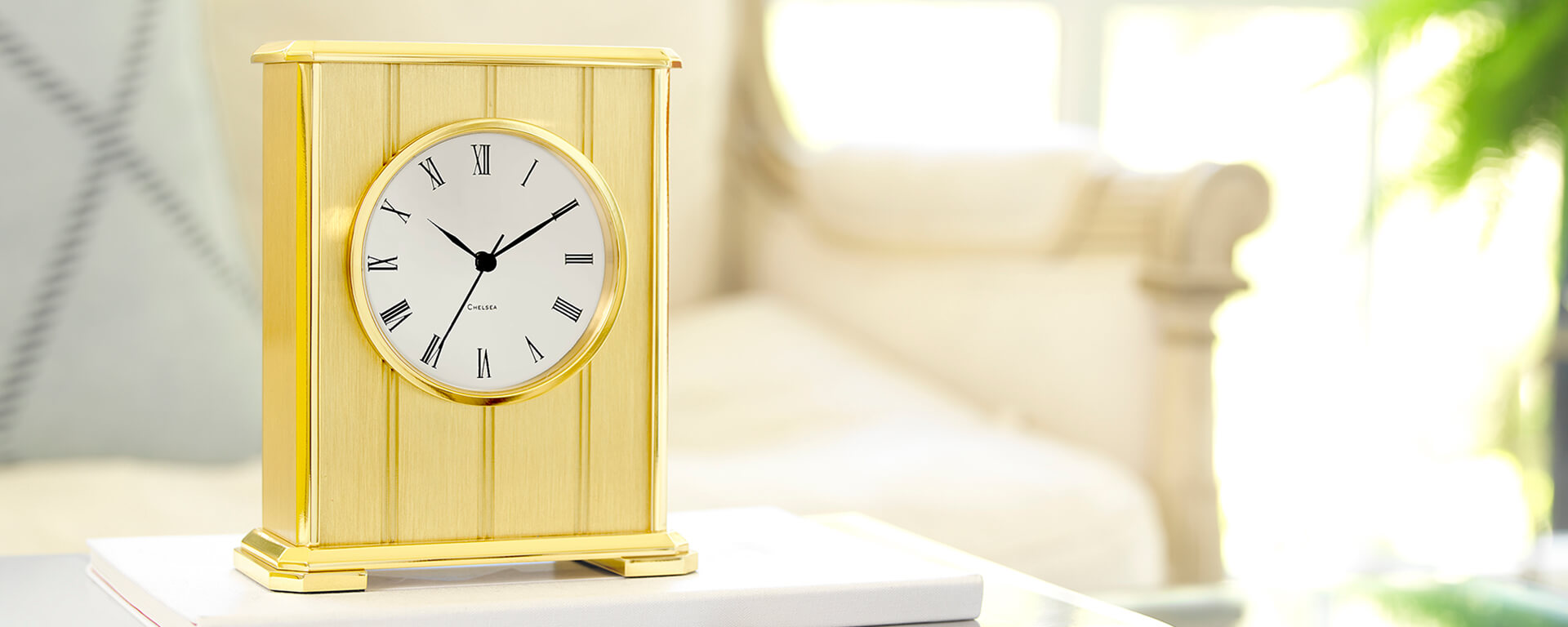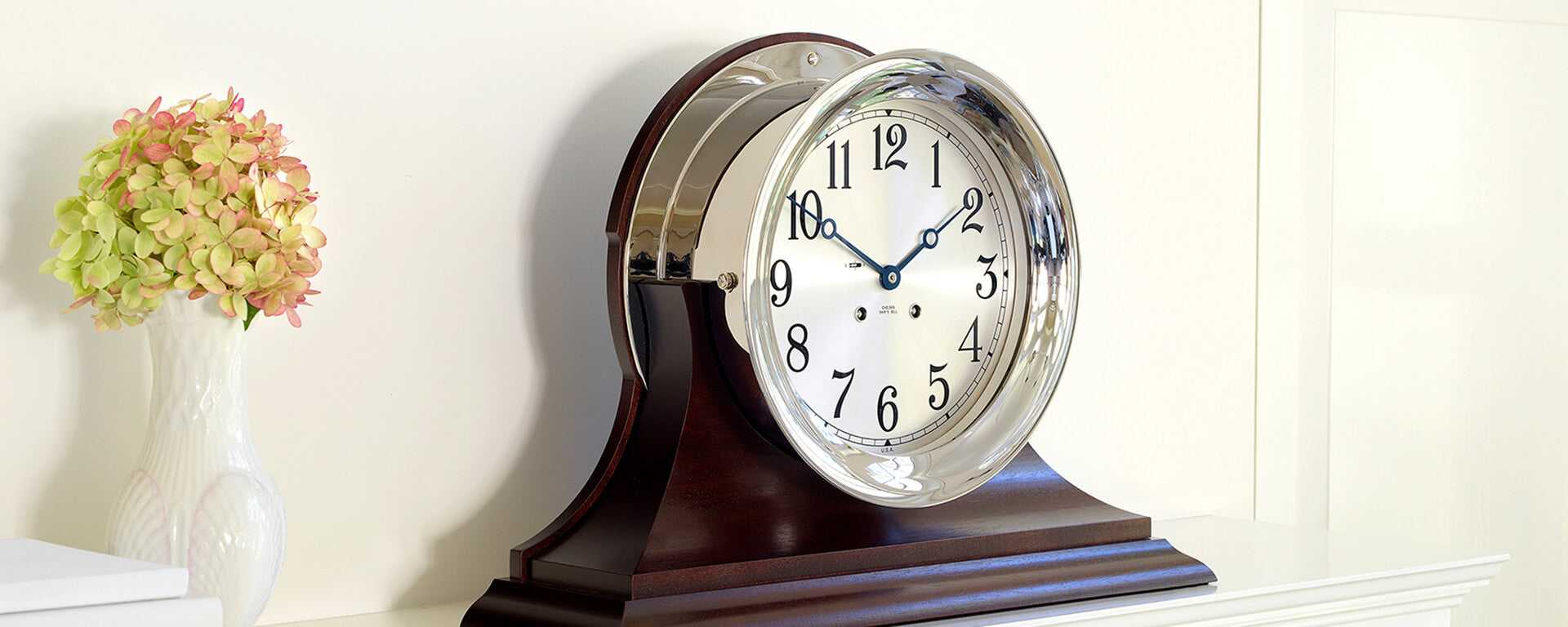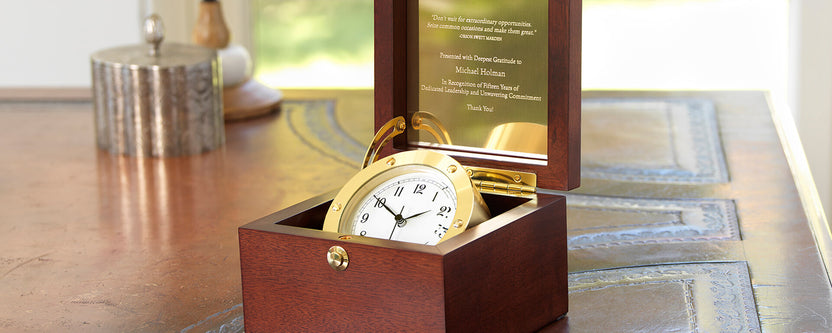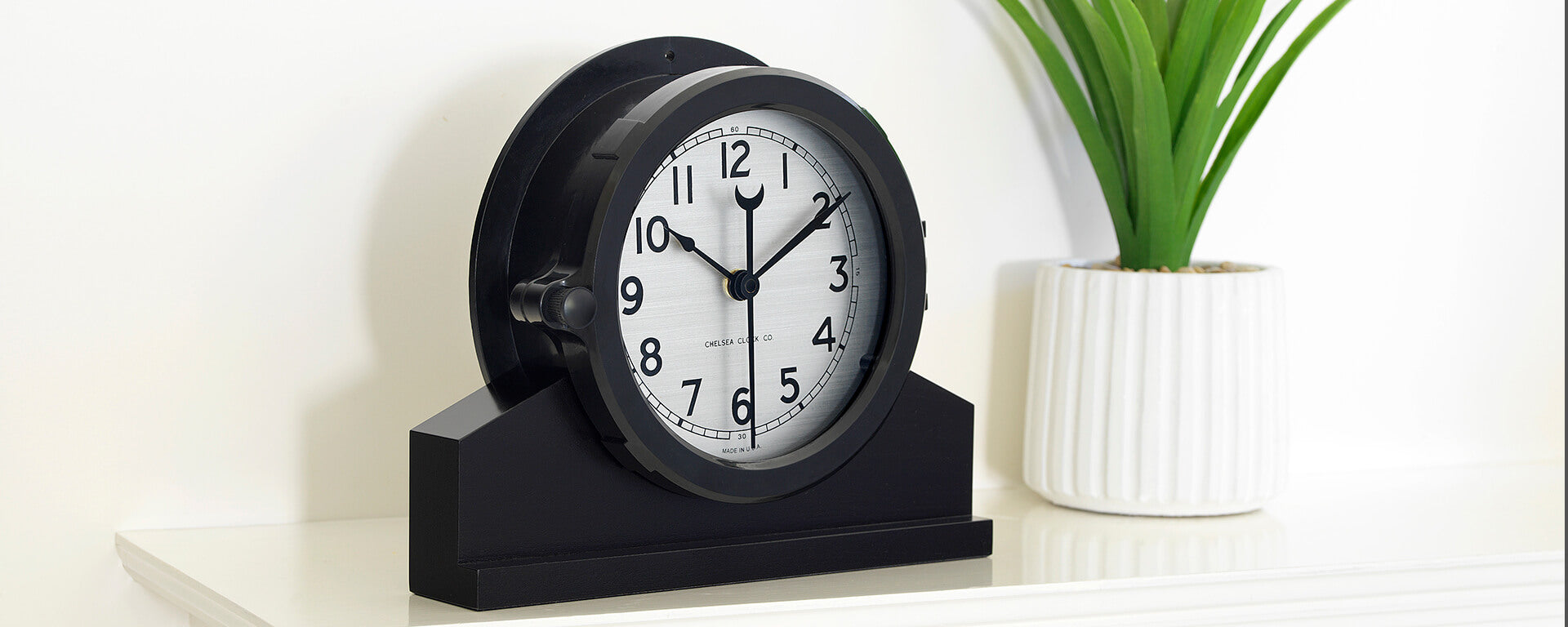Chelsea Clock, American Presidents, and the White House
Chelsea Clock: A Legacy of American Craftsmanship in the White House
Since 1897, Chelsea Clock has stood as an icon of American precision and craftsmanship. Throughout the past century, Chelsea clocks have also adorned the White House, gracing desks, mantels, and meeting rooms for Presidents spanning from Franklin D. Roosevelt to recent administrations. These clocks have symbolized not only timekeeping but American values of quality, durability, and resilience, resonating with Presidents including Franklin Roosevelt, Harry Truman, Dwight Eisenhower, John Kennedy, Lyndon Johnson, Richard Nixon, Gerald Ford, Jimmy Carter, Ronald Reagan, George H.W. Bush, Bill Clinton, George W. Bush, Barack Obama, Donald Trump, and Joe Biden.
The Beginning: Franklin D. Roosevelt and the First Chelsea Clock
The tradition of Chelsea clocks in the White House began with Franklin Delano Roosevelt, who placed a Chelsea Ship’s Bell Clock on his desk. FDR’s Chelsea clock became a familiar desk during his time as President and served as a fixture and an early emblem of American quality in the White House. His choice set a precedent, inspiring future Presidents to embrace Chelsea clocks as symbols of resilience and craftsmanship.
Harry Truman: A Timepiece for the Cabinet Room
During his presidency, Harry Truman displayed a Chelsea clock prominently on the mantel in the Cabinet meeting room, a tradition he began following World War II. Truman’s appreciation for Chelsea clocks grew as the timepieces became regarded as symbols of American craftsmanship and manufacturing. The Truman era clock served as a familiar backdrop to pivotal meetings with his Cabinet and established a longstanding White House tradition for decades to come. Subsequent Presidents, from Johnson to Carter, Bush, and Obama, would maintain a Chelsea clock in this very room.

President Truman Cabinet meeting at the White House
As a WWII General, Dwight D. Eisenhower brought a deep respect for Chelsea Clock into the White House. Chelsea Clock was a trusted supplier to the U.S. military, crafting reliable timepieces for Navy ships and U.S. Army operations. From his career as a five-star Army general, Eisenhower appreciated precision and dependability of Chelsea Clock, values he also carried into the Oval Office. Displaying a Chelsea clock in the White House, Eisenhower underscored his trust in American craftsmanship and his belief in the quality and reliability he valued as a former Army general.
John F. Kennedy: A Massachusetts Connection and Naval Heritage
John F. Kennedy had a unique connection to Chelsea Clock, stemming from his roots in Massachusetts, where Chelsea Clock has been crafting timepieces since 1897. Kennedy’s admiration for Chelsea Clock also traced back to his naval background. As a U.S. Navy veteran, he was familiar with Chelsea’s reputation for precision as a supplier to U.S. Navy ships since the early 20th century. During Kennedy’s time as President, his appreciation for the company and products extended to displaying a Chelsea Clock timepiece in the White House, sharing the legacy of American craftsmanship with his administration and visitors to the President’s residence in Washington.
Lyndon B. Johnson to Gerald Ford: Continuity in a Time of Change
Through the 1960s and early 1970s, Lyndon B. Johnson, Richard Nixon, and Gerald Ford honored the tradition of Chelsea clocks in the White House. As symbols of stability during periods of social and political transformation, these clocks represented American strength, continuity, and craftsmanship.

President Johnson Cabinet meeting at the White House
Jimmy Carter and Ronald Reagan: Honoring Tradition and Craftsmanship
Jimmy Carter, a leader known for his emphasis on American values and dedication to diplomacy, extended the presidential tradition of keeping a Chelsea clock in the White House. Carter’s respect for American craftsmanship was in harmony with Chelsea Clock’s dedication to quality, durability, and sustainability.
In the 1980s, Ronald Reagan continued the tradition of keeping a Chelsea timepiece in the Cabinet meeting room. The clock reflected his administration’s optimistic view of American values and his belief in the importance of American-made quality.
George H.W. Bush and Bill Clinton: Symbols of Diplomacy and Goodwill
As George H.W. Bush transitioned America into a post-Cold War era, Chelsea Clock helped serve as a symbol of stability in the White House. Bill Clinton continued this tradition as well, displaying a Chelsea clock in the White House as enduring representations of American resilience and quality.

President George W. Bush Cabinet meeting at the White House
Tradition and Continuity into the New Millennium
With George W. Bush, Chelsea Clock remained a symbol of pride and tradition. Displayed prominently in White House meetings and ceremonies, these clocks reflected the continuity of quality and craftsmanship that endured across decades and administrations. Barack Obama maintained Chelsea clocks presence in the White House. During the Obama administration, Chelsea Clock timepieces were often given to foreign dignitaries as expressions of American craftsmanship and friendship. The presence of Chelsea Clock continued under the administrations of Donald Trump and Joe Biden. In 2020, Chelsea Clock custom made a clock for the White House that hangs in the Ground Floor Corridor, serving as a special gift from the White House Historical Association.
Chelsea’s Legacy: Massachusetts Craftsmanship and a Commitment to Quality
Since its founding in 1897, Chelsea Clock has remained a benchmark of quality, with each clock handcrafted in Chelsea, Massachusetts. Chelsea’s dedication to fine craftsmanship and precision has secured its lasting place in American history, celebrated by Presidents and recognized as symbols of American excellence in Washington and abroad.
From Roosevelt to more recent Presidents, Chelsea clocks have been more than timepieces in the White House—they are symbols of America’s tradition, resilience, and the highest standards of craftsmanship.








